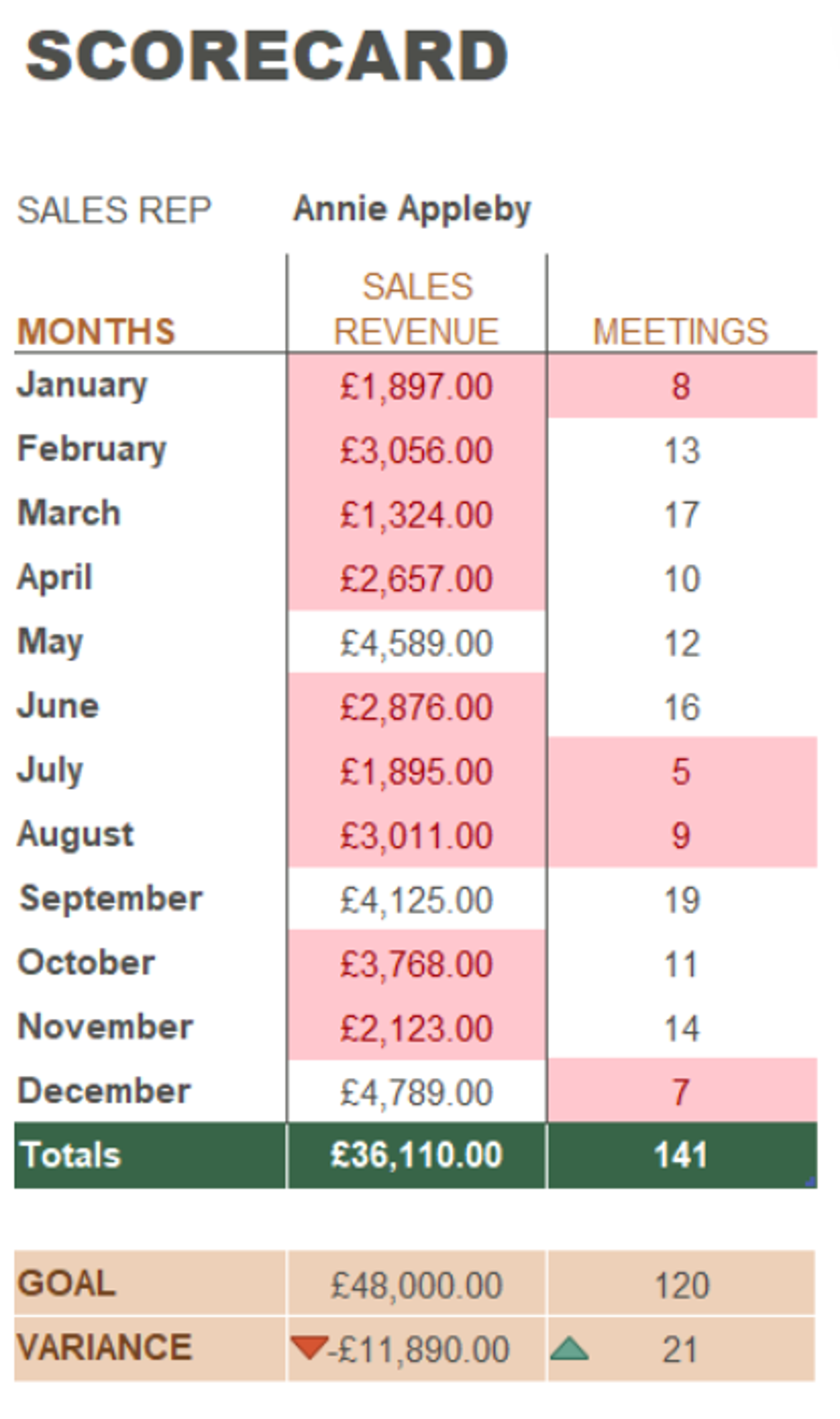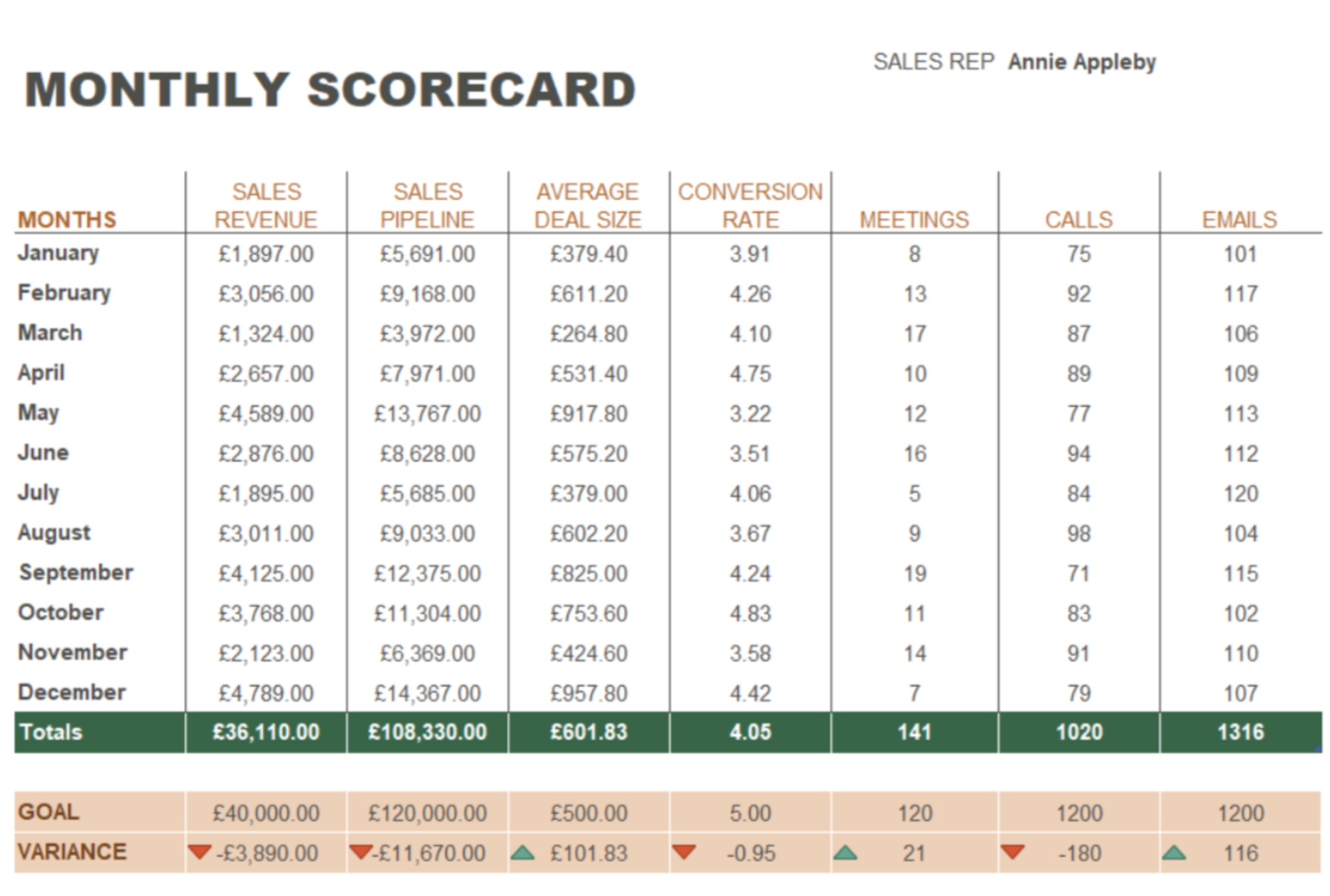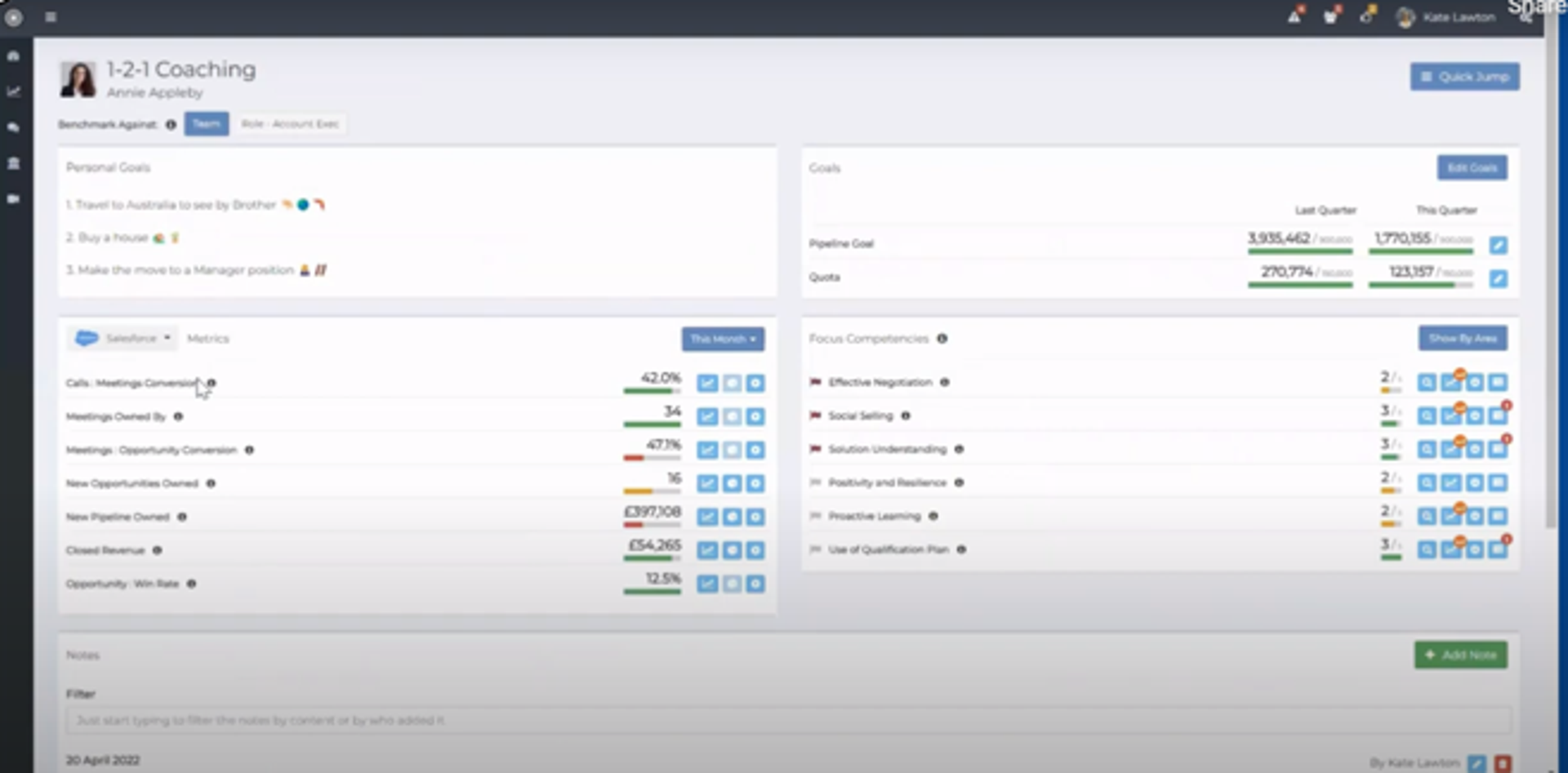Sales Rep Scorecard Examples: The Good, The Bad, The Ugly
Sales enablement

What is a Sales Rep Scorecard?
Sales rep scorecards or performance scorecards have been around since the dawn of sales time.
They enable a sales manager, sales team, or individual seller to track where they are against key performance indicators.
Sales rep scorecards can be defined as:
A tool used to evaluate the performance of a sales representative. It typically includes a set of key performance indicators (KPIs) that are used to track and measure the success of the sales representative in meeting their goals and objectives. The scorecard can be customized to reflect the specific goals and objectives of the sales representative and the organization. Some common KPIs that may be included in a sales rep scorecard are:
- Sales revenue: The total sales generated by the sales representative in a given period of time.
- Sales pipeline: The number of potential sales that the sales representative has in their pipeline, and the progress of those opportunities through the sales process.
- Conversion rate: The percentage of leads or opportunities the sales representative successfully closes.
- Average deal size: The average dollar value of the sales that the sales representative closes.
However, this definition is oversimplified, which puts you in danger of ending up with an ugly duckling scorecard. But never fear, we’re going to walk you through different examples of sales rep scorecards ranging from "ugly" to "great" and give you tips on how to ensure you have the swan of all scorecards.
Poor Example of a Sales Rep Scorecard

This is perhaps the most basic of sales rep scorecards.
Although it technically satisfies the definition of a sales rep scorecard…it is dangerously oversimplified, containing only 2 KPIs and annual goals.
Here's what’s fundamentally wrong with this picture:
- It’s one dimensional
- It’s showing lagging indicators that neither the Manager or the rep can go back and impact
- It’s only highlighting the negative areas
- It doesn’t give any insights into how or where I focus to ensure the next month doesn’t look the same
To bring the downsides of this type of scorecard to life, imagine how using this in a coaching conversation would go...
Manager: "Annie, you didn’t hit your annual number and were behind the monthly target in 9 out of 4 months”
[OK, so calling this out is not bad - but where do we go next?]
Manager: "Annie, you need to hit your meeting number!”
Annie: "Do you have suggestions on how I can do this?"
Manager: "Well, nothing specific, just work harder and figure it out."
This admittedly exaggerated example is intended to demonstrate the way coaching conversations can feel when an organization is using oversimplified sales rep scorecards, that don’t offer a consistent way to dig beneath high-level KPIs to provide insight into the skills, behaviors, and activities of the seller that are negatively impacting performance.
Better Example of a Sales Rep Scorecard

If we address the lack of data behind the "ugly" example of a sales rep scorecard, we end up with a more thorough view of performance that starts to unveil some of the indicators that sit behind the final lagging numbers.
Some key connections between performance and first-level causality we're starting to see in this example include:
- Beginning to be able to review whether there is a pipeline issue
- Deal qualification behaviors
- Insights into potential conversion issues
- Connections between the activities that sit behind meetings
But this approach is still fundamentally flawed because:
- It still drives us toward a numbers conversation
- It doesn’t speak to the underlying skills, processes, or behaviors that are behind these outcomes
- It doesn’t enable wider stakeholder groups (e.g. enablement) to understand where they can play a part in influencing performance.
Best Example of a Sales Rep Scorecard
To learn from the lessons of the "ugly" and "bad" examples above and create that swan of a scorecard, there are several principles to think of:
- Make it accessible to all relevant stakeholders - sales rep, manager, senior sales leadership, and enablement. This creates alignment.
- Make sure there’s no manual admin involved and it’s actively updated - admin is the curse of sales and will undermine any efforts you make to build an operational scorecard.
- Make it a simple and easy-to-follow journey - remember, the purpose of a scorecard is to take action to continually improve.
Following these principles results a great scorecard is something that looks like this:

If you're interested in recreating the example above Richardson can do all the heavy lifting for you. Using our Accelerate Sales Performance System we're able to aggregate all of your business metrics into one platform and correlate them to the selling behaviors that influence them. Then we take training to the next level and provide personalized, individualized learning paths to help your sellers reach peak performance while helping your sales managers conduct more productive coaching conversations.
Tips for Building A Best-in-class Sales Rep Score Card
Here are some tips to consider on your scorecard journey…
- Start with an overall team scorecard view so you can spot where intervention and support is needed
- When you move on to examining your reps performance, start with goals
- Use benchmarking against peers to highlight where individual reps are trailing behind
- Align your leading indicators to the skills and behaviors that underpin them to easily transition from a number conversation to the competencies behind them
- Use competency assessment and benchmarking to immediately identify where to focus
- Be clear on your positive indicators to support a coaching conversation
- Use flags to ensure continuity, consistency, and focus
- Take action and set clear coaching objectives to support improvement
In summary, the secret to creating the perfect rep scorecard is to:
- Ensure it’s muti-dimensional and can be valued across all stakeholders
- Connect the dots between the pure metrics and the competencies that underpin them
- Make sure it’s actionable - it should be a coaching tool to drive improvement, not just numbers for review

White Paper: From Insight to Impact - Harnessing Behavior Analytics for Sales Growth
Learn how to harness behavior analytics for sales growth by overcoming the challenge of connecting sales performance metrics to specific behaviors.
DownloadGet industry insights and stay up to date, subscribe to our newsletter.
Joining our community gives you access to weekly thought leadership to help guide your planning for a training initiative, inform your sales strategy, and most importantly, improve your team's performance.















